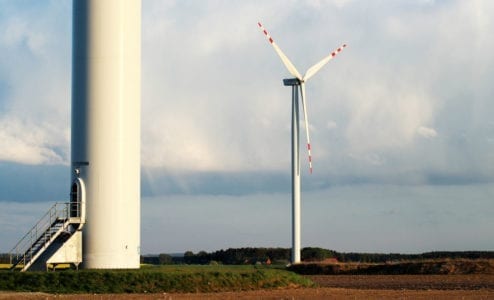Finding the $500 billion
The 15th Conference of the Parties in Copenhagen in 2009 was meant to launch an international framework that realigned our development trajectories towards a low carbon future. A decade later, with rising emissions, we still find a significant set of barriers to unlocking this low-carbon pathway to sustainable prosperity.

Estimates vary, although coalesce around $500 billion, as the required investment into energy infrastructure per year, every year, for the next 30 years to mitigate climate change. Investments into renewable energy infrastructure grew by 16% and reached $280 billion in 2017—a large but still inadequate figure. Therefore, there is still a need to scale up investment rapidly, which requires understanding what the barriers to this are so that solutions can be deployed as quickly as possible.
A new paper has been published in Sustainability that reviews the barriers to investment in climate change solutions. This work is part of the doctoral studies for CUSP researcher Sarah Hafner.
The paper looked at 31 practice-based reports published by networks, groups or think tanks that represent the investment community. Groups such as the Aldersgate Group, the Climate Policy Initiative, EU High Level Expert Group on Sustainable Finance and the Organisation for Economic Co-operations and Development (OECD). These reports were used to define a set of key words that were then used to assess how deep the world of academia engaged and analysed these issues. A set of 91 academic papers were identified and mapped through a scoping review.
Eleven sets of barriers were identified including:
- Immaturity of climate change policy frameworks and lack of stable policies
- Policies in favour of ‘brown’ energy infrastructure
- Constraints on decision making within investor companies
- Perceptions that returns on renewable infrastructure are too low and require high initial capital investment
- Requirement that projects need a certain credit rating
- Technology-risk associated with uncertain and unproven technologies
- Transparency on climate related disclosure and data
- Limited projects with acceptable risk-return profiles
- Lack of suitable financial vehicles
- High transaction costs or fees
- Lack of knowledge or technical advice.
Whilst exploring in detail the barriers to investment in climate change solutions, there is a range of different approaches adopted in the academic literature. In general, our review found that there are indeed many barriers, although the extent to which these barriers are the focus of study themselves varies greatly. Some papers explored the overall issue of barriers to investment, however the majority (55 paper) focussed on particular case studies or specific barriers towards upscaling green finance in an isolated way. Indeed one paper also argued that the barriers it identified were largely explained by a lack of knowledge—that is the barriers are not real but down to the perceptions of the investors.
Overall there still exists a lack of maturity in the market. Many of the barriers such as technical advice, decision making and risk assessments are due to the relative lack of experience in making these types of investment within the investor community. Coupled with that, policy uncertainty is often associated with a lack of evidence, or alignment across policy areas.
This lack of maturity in policy and investment communities is also met by a lack of depth and breadth in academic research. Whilst growing, with some significant and well cited research, a lot more needs to be done to understand the real barriers to scaling up investment to meet the challenge of climate change.
As governments start to explore net zero targets for the future the urgency of these three sectors (academia, policy and investor) communicating and prioritising focus cannot be underestimated.



